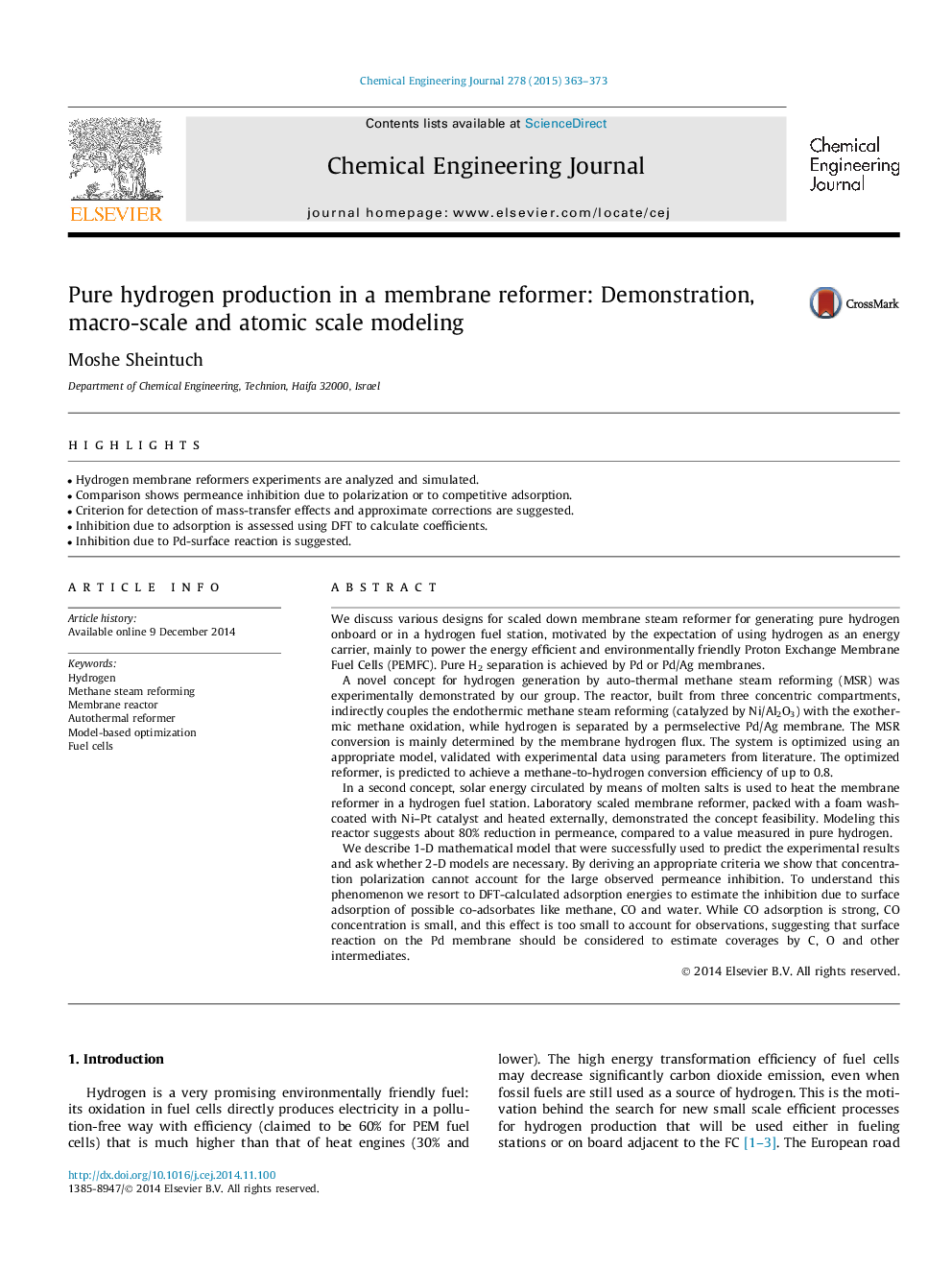| کد مقاله | کد نشریه | سال انتشار | مقاله انگلیسی | نسخه تمام متن |
|---|---|---|---|---|
| 146190 | 456363 | 2015 | 11 صفحه PDF | دانلود رایگان |
• Hydrogen membrane reformers experiments are analyzed and simulated.
• Comparison shows permeance inhibition due to polarization or to competitive adsorption.
• Criterion for detection of mass-transfer effects and approximate corrections are suggested.
• Inhibition due to adsorption is assessed using DFT to calculate coefficients.
• Inhibition due to Pd-surface reaction is suggested.
We discuss various designs for scaled down membrane steam reformer for generating pure hydrogen onboard or in a hydrogen fuel station, motivated by the expectation of using hydrogen as an energy carrier, mainly to power the energy efficient and environmentally friendly Proton Exchange Membrane Fuel Cells (PEMFC). Pure H2 separation is achieved by Pd or Pd/Ag membranes.A novel concept for hydrogen generation by auto-thermal methane steam reforming (MSR) was experimentally demonstrated by our group. The reactor, built from three concentric compartments, indirectly couples the endothermic methane steam reforming (catalyzed by Ni/Al2O3) with the exothermic methane oxidation, while hydrogen is separated by a permselective Pd/Ag membrane. The MSR conversion is mainly determined by the membrane hydrogen flux. The system is optimized using an appropriate model, validated with experimental data using parameters from literature. The optimized reformer, is predicted to achieve a methane-to-hydrogen conversion efficiency of up to 0.8.In a second concept, solar energy circulated by means of molten salts is used to heat the membrane reformer in a hydrogen fuel station. Laboratory scaled membrane reformer, packed with a foam washcoated with Ni–Pt catalyst and heated externally, demonstrated the concept feasibility. Modeling this reactor suggests about 80% reduction in permeance, compared to a value measured in pure hydrogen.We describe 1-D mathematical model that were successfully used to predict the experimental results and ask whether 2-D models are necessary. By deriving an appropriate criteria we show that concentration polarization cannot account for the large observed permeance inhibition. To understand this phenomenon we resort to DFT-calculated adsorption energies to estimate the inhibition due to surface adsorption of possible co-adsorbates like methane, CO and water. While CO adsorption is strong, CO concentration is small, and this effect is too small to account for observations, suggesting that surface reaction on the Pd membrane should be considered to estimate coverages by C, O and other intermediates.
Journal: Chemical Engineering Journal - Volume 278, 15 October 2015, Pages 363–373
